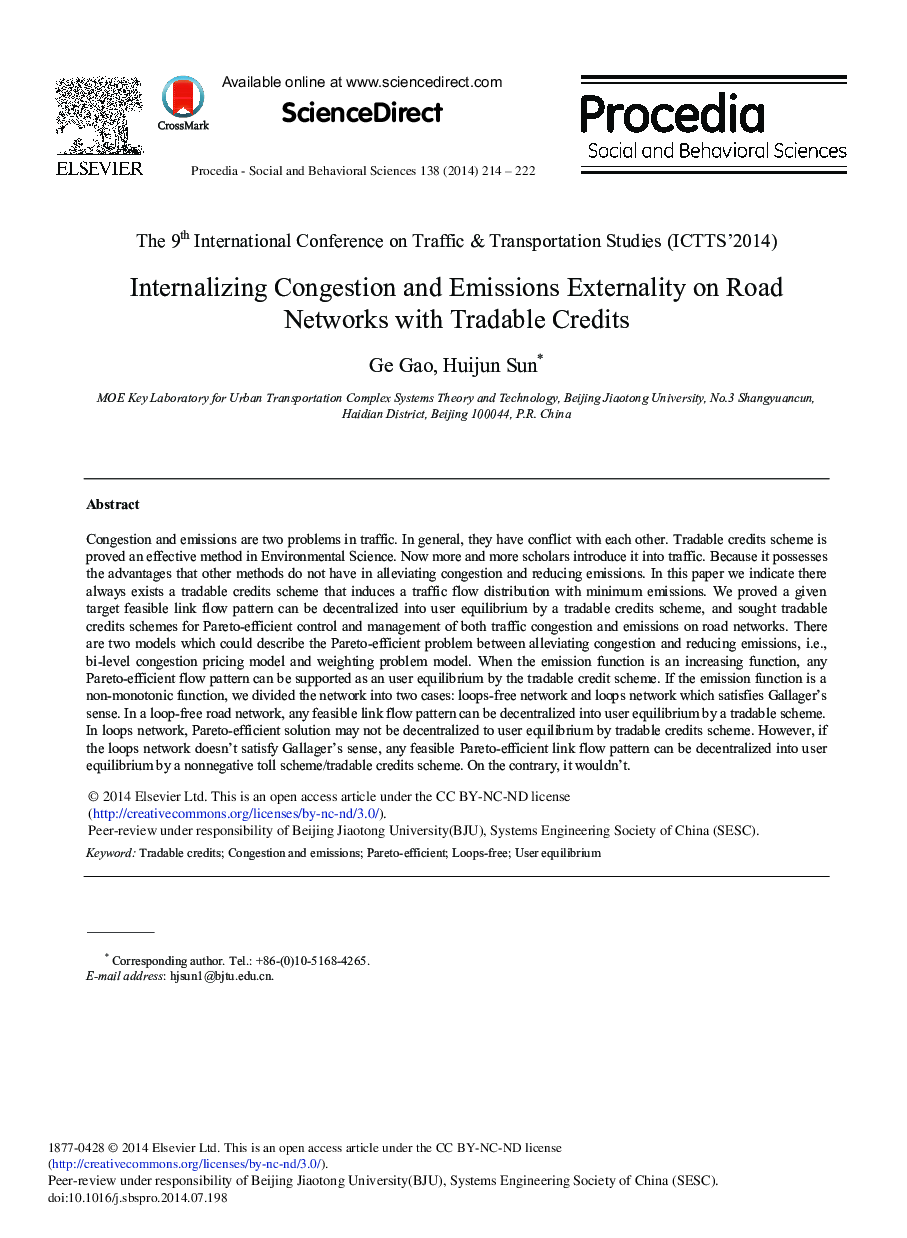| Article ID | Journal | Published Year | Pages | File Type |
|---|---|---|---|---|
| 1114216 | Procedia - Social and Behavioral Sciences | 2014 | 9 Pages |
Congestion and emissions are two problems in traffic. In general, they have conflict with each other. Tradable credits scheme is proved an effective method in Environmental Science. Now more and more scholars introduce it into traffic. Because it possesses the advantages that other methods do not have in alleviating congestion and reducing emissions. In this paper we indicate there always exists a tradable credits scheme that induces a traffic flow distribution with minimum emissions. We proved a given target feasible link flow pattern can be decentralized into user equilibrium by a tradable credits scheme, and sought tradable credits schemes for Pareto-efficient control and management of both traffic congestion and emissions on road networks. There are two models which could describe the Pareto-efficient problem between alleviating congestion and reducing emissions, i.e., bi-level congestion pricing model and weighting problem model. When the emission function is an increasing function, any Pareto-efficient flow pattern can be supported as an user equilibrium by the tradable credit scheme. If the emission function is a non-monotonic function, we divided the network into two cases: loops-free network and loops network which satisfies Gallager's sense. In a loop-free road network, any feasible link flow pattern can be decentralized into user equilibrium by a tradable scheme. In loops network, Pareto-efficient solution may not be decentralized to user equilibrium by tradable credits scheme. However, if the loops network doesn’t satisfy Gallager's sense, any feasible Pareto-efficient link flow pattern can be decentralized into user equilibrium by a nonnegative toll scheme/tradable credits scheme. On the contrary, it wouldn’t.
